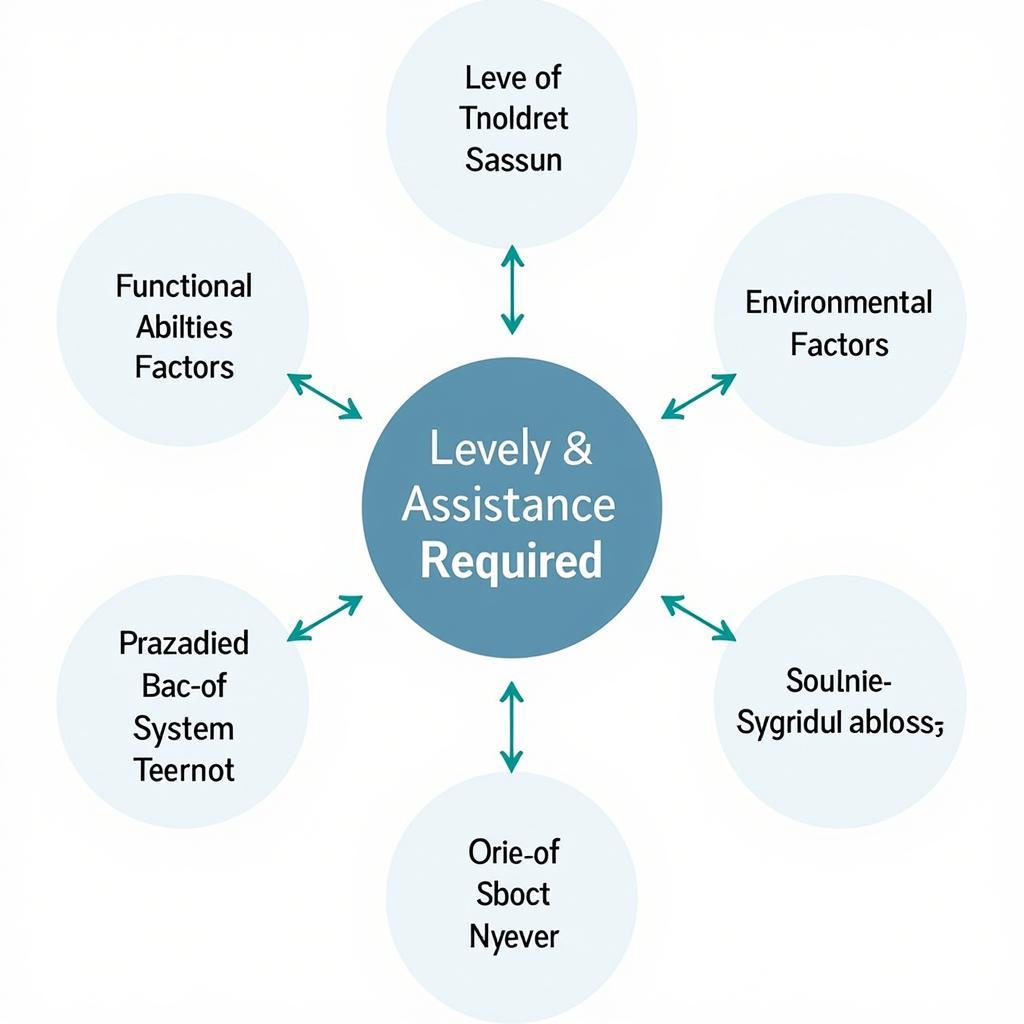Self Care Deficit Assessment Tools are essential for healthcare professionals to evaluate a patient’s ability to perform daily living activities. These tools provide a structured approach to identifying areas where individuals may need support and developing targeted interventions to improve their independence and quality of life. Understanding these tools is crucial for providing effective, patient-centered care. This comprehensive guide will explore the ins and outs of these valuable assessment tools.
What are Self Care Deficit Assessment Tools?
Self care deficit assessment tools are structured questionnaires or checklists used to assess an individual’s ability to perform activities of daily living (ADLs). These activities include basic tasks such as bathing, dressing, eating, toileting, and transferring (moving from one position to another). The tools help healthcare providers identify specific areas where a person may be struggling with self care and determine the level of assistance they require. These tools provide valuable insights for developing personalized care plans and ensuring that patients receive the appropriate support to maintain their independence and well-being. Accurately assessing self care deficits is the first step in creating an effective care plan.
 Examples of Self Care Deficit Assessment Tools
Examples of Self Care Deficit Assessment Tools
Key Components of Self Care Deficit Assessment Tools
Several key components are typically included in self care deficit assessment tools to provide a comprehensive evaluation. These components aim to capture the multifaceted nature of self-care and its impact on an individual’s life.
- Functional Abilities: This section assesses the individual’s physical and cognitive capacity to perform ADLs. It considers factors like strength, dexterity, balance, and cognitive function.
- Environmental Factors: The assessment also considers environmental influences, such as accessibility of the living space, availability of assistive devices, and social support.
- Psychosocial Factors: Emotional and psychological factors, such as motivation, depression, and anxiety, can significantly impact self care abilities and are evaluated as well.
- Level of Assistance Required: This component determines the level of support the individual needs for each ADL, ranging from independent performance to complete dependence on others.
 Key Components of a Self-Care Deficit Assessment
Key Components of a Self-Care Deficit Assessment
How to Use a Self Care Deficit Assessment Tool
Using a self care deficit assessment tool effectively involves several key steps. Careful and thorough implementation is crucial for accurate results and informed decision-making.
- Select the appropriate tool: Choose a tool that is suitable for the individual’s age, cognitive abilities, and specific needs.
- Gather necessary information: Review medical history, current medications, and any previous assessments. Talk with family members or caregivers to gain a complete picture of the individual’s self care abilities.
- Conduct the assessment: Observe the individual performing ADLs whenever possible, or ask them to describe their abilities in detail. Be mindful of cultural sensitivities and ensure the individual feels comfortable during the assessment.
- Interpret the results: Analyze the findings to identify specific areas of self care deficit and the level of assistance required. Collaborate with the individual, family members, and other healthcare professionals to develop a personalized care plan that addresses identified needs and goals.
- Document and monitor progress: Maintain detailed records of the assessment findings and interventions. Regularly re-assess to monitor progress and adjust the care plan as needed.
 Steps to Using a Self-Care Deficit Assessment Tool
Steps to Using a Self-Care Deficit Assessment Tool
Benefits of Using Self Care Deficit Assessment Tools
Utilizing self care deficit assessment tools offers numerous benefits for both patients and healthcare providers.
- Improved Patient Outcomes: By identifying specific areas where patients need support, healthcare providers can develop targeted interventions that improve their independence, safety, and overall well-being. Early identification of self care deficits can prevent further decline and improve long-term health outcomes.
- Enhanced Care Planning: The assessment provides valuable data for developing personalized care plans that address individual needs and goals. This ensures that patients receive the appropriate level of support to maintain their independence and quality of life.
- Increased Efficiency: Using standardized tools can streamline the assessment process and facilitate communication among healthcare professionals. This can lead to more efficient and coordinated care delivery.
- Better Resource Allocation: By identifying specific needs, healthcare resources can be allocated more effectively, ensuring that patients receive the right level of support at the right time.
Conclusion
Self care deficit assessment tools are invaluable resources for healthcare professionals seeking to provide comprehensive and patient-centered care. By understanding and utilizing these tools effectively, we can enhance patient outcomes, improve care planning, and optimize resource allocation. These tools are essential for addressing the unique self care needs of individuals and empowering them to maintain their independence and achieve their highest level of functioning. Remember, assessing self care deficits is the first step towards providing effective and individualized support.
FAQs
- What is the purpose of a self care deficit assessment tool? To assess an individual’s ability to perform activities of daily living.
- Who uses self care deficit assessment tools? Healthcare professionals like nurses, doctors, therapists, and social workers.
- What are some common ADLs assessed by these tools? Bathing, dressing, eating, toileting, and transferring.
- How often should a self care deficit assessment be conducted? Regularly, as needed, and based on the individual’s condition and progress.
- Are there different types of self care deficit assessment tools? Yes, there are various tools available, tailored to different populations and needs.
- What are some factors that can affect self care ability? Physical limitations, cognitive impairments, environmental barriers, and psychosocial factors.
- How can I find the right self care deficit assessment tool for my patient? Consult with experienced colleagues and consider the individual’s specific needs and circumstances.
Need help with car accident injury diagnostics?
For further assistance, please contact us via WhatsApp: +1(641)206-8880, Email: [email protected] or visit our office at 910 Cedar Lane, Chicago, IL 60605, USA. Our customer service team is available 24/7.

Leave a Reply